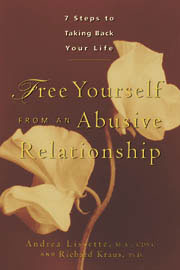
Discover how counseling, therapy and support groups work and how these different talking treatments might help you.
Why try talking treatments?
What are the different talking treatments?
Who are talking treatments for?
When are talking treatments not suitable?
Do talking treatments work?
How can I get started?
How the therapist-patient relationship works
Organizations that can help
Counseling, Therapy, Support Groups: How They Work, What They Do For You
Here's a brief guide to the different types of talking treatments that are available. It also provides information on who might benefit from them and who you should contact about getting this type of help.
Why try talking treatments?
Talking treatments (i.e. counseling, therapy, support groups) can help you to overcome emotional difficulties and free yourself from self-destructive ways of feeling, thinking and behaving. They work by providing an opportunity for you to talk in a way that assists you to understand yourself better. Having gained this understanding, you can work out ways of living your life in a more positive and constructive way.
This way of changing your life is very different from using drugs, such as tranquilizers and antidepressants, which doctors often prescribe for people who are emotionally distressed. These drugs change your mood by affecting the balance of chemicals in your body, but do not help you to deal with underlying problems.
People who use mental health services often prefer talking treatments to drugs. Research has proved that talking treatments can be just as helpful as drugs for many mental health problems and suggests they should be offered as well as, or instead of, medication, when possible. The National Institute of Mental Health (NIMH) makes recommendations to doctors about treating mental health problems. They often suggest forms of talking treatment that are brief, cost-effective and supported by clinical evidence. This does not necessarily mean that they are always the best form of talking treatment for you. Many organizations and private therapists offer treatment, although it can be more difficult to find if you can't afford to pay very much.
What are the different talking treatments?
There is a wide variety of talking treatments. Some last for several years, while others take just a few sessions. You may see someone on your own or be part of a group.
The self-help group
This is usually for people who want to overcome a problem shared by members of the group. It may be alcohol abuse, depression or being scared to go out of the house, to give some examples. Often these groups are led by people who have overcome the difficulties themselves. The people in the group are able to share their experiences, and learn from and encourage each other.
The support group
This is similar, but for people with a common background or interest. For example, it could be a group for mothers of young children, for gay men or for people doing similar, stressful jobs.
Individual counseling
This is an opportunity to talk about whatever is troubling you, and to be heard. It is generally face-to-face, but can also take place over the phone or via email. If you decide to see a counselor in person, it may be for one session, or you may arrange for regular appointments, perhaps an hour a week for several months. Telephone and internet counseling is also obtainable from a variety of organizations and is especially valuable in a particular crisis.
Counseling tends to focus on your current problems, with the counselor helping you to find the best ways to tackle them. The counselor's most important skill is the ability to listen. The aim is not to tell you what to do, or to offer a personal opinion, but about helping you to arrive at your own solutions.
Individual psychotherapy
The overall aim of psychotherapy is to help you to understand why you feel the way you do, and what lies behind your responses to other people and to things that happen to you. Talking about your experiences can help you to release painful feelings and find better ways of managing situations you have been finding difficult. This should enable you to reach a greater understanding of events that have shaped your life, and of self-destructive patterns of behavior. It may, therefore, enable you to overcome specific problems, such as compulsive eating and lack of confidence, or simply allow you to become happier.
Psychotherapists have many different styles of working, and the number of sessions required can vary from one to five times a week. Each session may last for 50 minutes or an hour. You may agree to a fixed term of treatment, or the therapy may be open-ended and could continue for several years.
Some therapists will want you to talk mainly about your early childhood, and others will be more interested in what can be learnt from the relationship you make with them (known as 'the transference'). The psychotherapist may want to know how you feel about yourself, as a woman, a Black person or someone with a physical disability, to give some examples. Others will be more interested in your dreams and fantasies. Some will encourage you to get rid of bad feelings by crying or getting angry, as well as talking.
There is a great deal of overlap between psychotherapy and counseling, and there are many different types of psychotherapy. If you want more detailed information, you can read "Types of Therapy" or you could consult the organizations listed under Useful Organizations.
Relationship counseling and family therapy
Relationship counseling is for couples who want to sort out problems in their relationship. They attend sessions together and the counselor helps them to express their difficulties, listen to each other, develop an understanding of each other, and find ways of making their relationship work better. They may decide to end the relationship but, with luck, having gained more understanding of why it was not working and what lessons they can learn for the future. Family therapy works in just the same way, with the entire family attending.
Group therapy
Group therapy enables people to deal with interpersonal problems and develop self-awareness. There are generally 8 to 12 people in the group, who meet together regularly, with a therapist, and talk about their concerns.
The idea of group therapy can be intimidating, but most people find it reassuring that others may be in a similar position to themselves. In a group environment, opportunities may arise to behave differently, to be more assertive or more vulnerable. It is also helpful for people to hear other points of view about their concerns, the way they appear, how their behavior comes across and in what way it affects other people.
Cognitive behavior therapy (CBT)
Behavior therapy, also known as exposure therapy or desensitization, is often practiced by psychologists. It is used to help people overcome fears or phobias, such as feeling too scared to go into a shop, or obsessive behavior, such as washing many times a day. An opportunity is usually given to discuss the problem, and then to face your fear, gradually, so that you learn to cope. Cognitive therapy helps to identify connections between your thoughts, feelings, and behavior. It is a practical treatment that focuses on specific problem-solving techniques and enables you to develop new coping mechanisms.
Behavior and cognitive therapies are often combined, and practitioners of either may refer to their approach as cognitive behavior therapy. New forms of CBT have been developed and NIMH has recommended particular types for particular problems, such as depression, anxiety, eating disorders, schizophrenia and personality disorders. They include Mindfulness, interpersonal therapy and dialectical behavior therapy.
CBT may be offered by clinical psychologists or psychiatrists.
The therapeutic community
This is a place where you can either live full time or attend regularly during the day. Usually, there is a mixture of individual and group therapy, and informal support from other members of the community.
Who is therapy for?
Prejudice about emotional distress sometimes stops people from using talking treatments they could benefit from. They may feel that it is a sign of weakness or inadequacy to seek assistance in this way. The truth is very different; it is not your fault if you experience emotional difficulties, and it takes courage to face up to them and find better ways of coping. Most people can benefit from talking treatments. They can do for the mind what exercise does for the body. They liven you up, help you to think more flexibly, make you stronger, emotionally, and help to stop more serious problems from occurring. Just like taking exercise, it is important to find what suits you best.
Unfortunately, it is also true that doctors are more likely to suggest talking treatments if you are white and middle class. Talking treatments work just as well for working class people, Black people and people from minority ethnic communities.
The only difficulty is that most counselors and psychotherapists are white and middle class, and they may not have a good understanding of what it is like to be you. It can help if they have made the effort to learn about cultures that are different from their own. People with learning disabilities, lesbians and gay men, older people and people with chronic illness are also under-represented when it comes to receiving talking treatments.
Good psychotherapists and counselors listen and learn from their clients, and don't try and impose their values on them. There are some organizations that offer talking treatments to specific sections of the community. There is now much more awareness of this issue, and more effort has been focused on tackling it.
When are talking treatments not suitable?
There are some good reasons (as well as bad ones) for not offering talking treatments. In groups, for instance, it is important that people should be prepared to listen to, and support each other, as well as to talk about themselves. If you aren't able to do this, or are abusive towards others, you may be asked to leave.
Psychotherapists and counselors may decide they can't help you. If you are abusing alcohol or other drugs, they may say you first need specialized care to help you stop. If your doctor has prescribed you psychotropic (mood-altering) drugs, such as tranquilizers, some psychotherapists and counselors will not mind, but others will say that you need to come off them for the treatment to work. They may be able to help you do this as part of the treatment.
There is no general agreement among psychotherapists and counselors about whether they can assist people who are diagnosed as having serious mental illnesses, such as schizophrenia or manic depression (bipolar disorder). Some will say, 'Yes, but only if you stop taking the drugs'. Most will say that whether they can help depends on the person, not on the diagnosis.
Generally, successful treatment depends on the person being prepared to try and make their life better, using the support that is offered. If you blame all your difficulties on other people, or expect the counselor, psychotherapist or fellow group members to 'make you better' without putting in any effort yourself, then you will not be able to benefit.
Talking treatments can assist people to overcome many different sorts of problems, but some difficulties are better helped by other treatments as well, or instead. For example, if you find it hard to sleep, learning relaxation techniques would probably be your first priority.
Does therapy really work?
Talking treatments like therapy or counseling certainly do work, but not always. There are many people whose lives have improved beyond recognition as a result of attending a group, or seeing a counselor or psychotherapist. It may have been a struggle and taken a long time, but it has been worth it. Profound changes have taken place and they know, whatever happens, they will not experience their old problems again.
Others know that they have, at least, experienced some benefit. They may understand themselves better and have some clues about how they can lead more positive lives. The good periods may last longer and the bad times may be more manageable.
Some people are disappointed. They may have found their counselor or psychotherapist never really understood them, or felt that they did not fit into their group. A bad experience of talking treatments may have left them feeling more hopeless than before. Talking treatments vary in their quality. Some professionals are simply better at their jobs than others. They all have strengths and weaknesses. Some may be better at helping women than men. Others may have a great deal of understanding of depression but not of addiction.
Therapists use different methods, and some may be more effective than others. Or one may particularly suit you when another one does not. Your own attitude will also make a difference. Some people find that just knowing that their therapist is there and focusing on their concerns makes them feel valued.
If you go along determined to make the most of every session and to be completely honest about yourself, it is more likely to work. If, as a result of what you learn about yourself, you are prepared to face your fears and risk making changes in your life, you are much more likely to achieve good results.
It is useful if you can be clear about how you hope to benefit from the talking treatments. It will help you to make the best use of your sessions and, also, to decide if it is proving to be useful for you.
How can I get started?
Talking treatments may be available free through various support groups, an area medical school psychiatric training program, through social services or from independent organizations, such as the local women's shelter. What is available varies a great deal from place to place. Unfortunately, there is not always something suitable. What services do exist are often not well publicized, and it is worth asking about them in as many places as possible. Try your local support group, your doctor, local social services or United Way, or the other organizations listed here.
Sometimes, counseling organizations ask for a donation, based on what you can afford. If you are a student, you may find you can see a counselor at your college. Large companies sometimes employ counselors for their staff. Some therapeutic communities are free.
The cost of private counseling or psychotherapy can vary a great deal. A fee of $60-150 per session is quite common. Groups may be cheaper. Sometimes you can pay less if you are on a low income, or if you are prepared to see a student (who should be supervised by an experienced therapist).
There are many diplomas and certificates, each requiring different amounts of study and experience. (For information about the organizations mentioned see Useful Organizations.) Check whether your counselor or therapist is a member of a professional body with insurance and a complaints procedure. He or she should be working to a code of practice and should be able to give you a copy of it.
Word-of-mouth is one of the best ways of identifying good practitioners. If you know people who have seen counselors and psychotherapists, it's worth asking them if they can recommend someone.
It's usual to have an initial assessment or interview so that the group leader, psychotherapist or counselor can decide if they can help you, and you can decide if you want to see them. Don't be afraid to ask questions about their training, experience and anything else you want to know, and whether or not they are receiving supervision from someone more experienced. If you are religious, you may want to ask how the person feels about your beliefs.
If you have the choice, it may be worth seeing several people before you make up your mind. The most important question to ask yourself is, 'Can I make a good relationship with this person?' Research suggests this is one of the most important ingredients in successful treatments.
If you can't find the talking treatment you want, there may be a befriending scheme, in your area. This is not as formal as the talking treatments described here. You will be introduced to someone who will listen to you sympathetically and help you in whatever ways they can.
How should the therapist-patient relationship work?
The relationship with a psychotherapist (or indeed with counselors, psychologists and group leaders) is very different from the one you make with a friend. You will find out very little about their personal life and their own difficulties and struggles. But you will reveal a lot about yourself.
The psychotherapist will be an important figure in your life. You are likely to develop strong feelings about him or her, which could be positive or negative. Either way, it is easy to feel that the psychotherapist is stronger and more powerful than you. This need not cause any difficulties, but it can leave you vulnerable to exploitation. A psychotherapist may persuade you to carry on seeing them (and paying for your sessions) even though your best judgment is that the sessions are not working. Psychotherapists have also been guilty of sexual harassment. Remember that you are the customer, as well as a client or patient.
You may need to discuss practical arrangements, review how your sessions are going, or air a grievance. You have every right to do this, as one responsible adult to another. If a psychotherapist can only relate to you as a neurotic patient, treat them with suspicion. Remember you can always leave.
It's worth remembering that your psychotherapist or counselor is a real person, doing a challenging job. They have good days and bad days, like the rest of us. You can help them to do their job to the best of their ability by treating them respectfully, by being on time for your session and paying your bills. If you appreciate their efforts, tell them so, and give them feedback, so they know when you can see their work is producing results.
Useful Organizations
American Psychiatric Association
888-35-PSYCH
Your county Psychological Association
listed in the phone book
American Psychological Association
800-964-2000
American Association for Marriage and Family Therapy
703-838-9808
National Association of Social Workers
Mental Health America
800-969-6642
National Alliance for the Mentally Ill (NAMI)
800-950-NAMI (6264)
Depression and Bipolar Support Alliance
800-826-3632
Anxiety Disorders Association of America
240-485-1001
Alcoholics Anonymous
212-870-3400



















